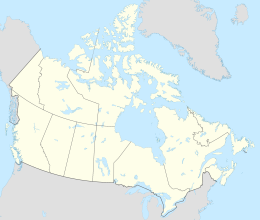| Geography | |
|---|---|
| Location | Northern Canada |
| Coordinates | 74°57′N079°58′W / 74.950°N 79.967°W |
| Archipelago | Queen Elizabeth Islands Arctic Archipelago |
| Administration | |
Canada | |
| Territory | Nunavut |
| Region | Qikiqtaaluk |
| Demographics | |
| Population | Uninhabited |
Philpots Island is a member of the Queen Elizabeth Islands and the Arctic Archipelago in the territory of Nunavut. It is the largest of Devon Island's offshore islands, located at Devon's eastern end. [1] It lies in Baffin Bay, with Hyde Inlet to the north, and the Parry Channel to the south.
Philpots Island is home to northern fulmars, glaucous gulls, and ivory gulls [2]

